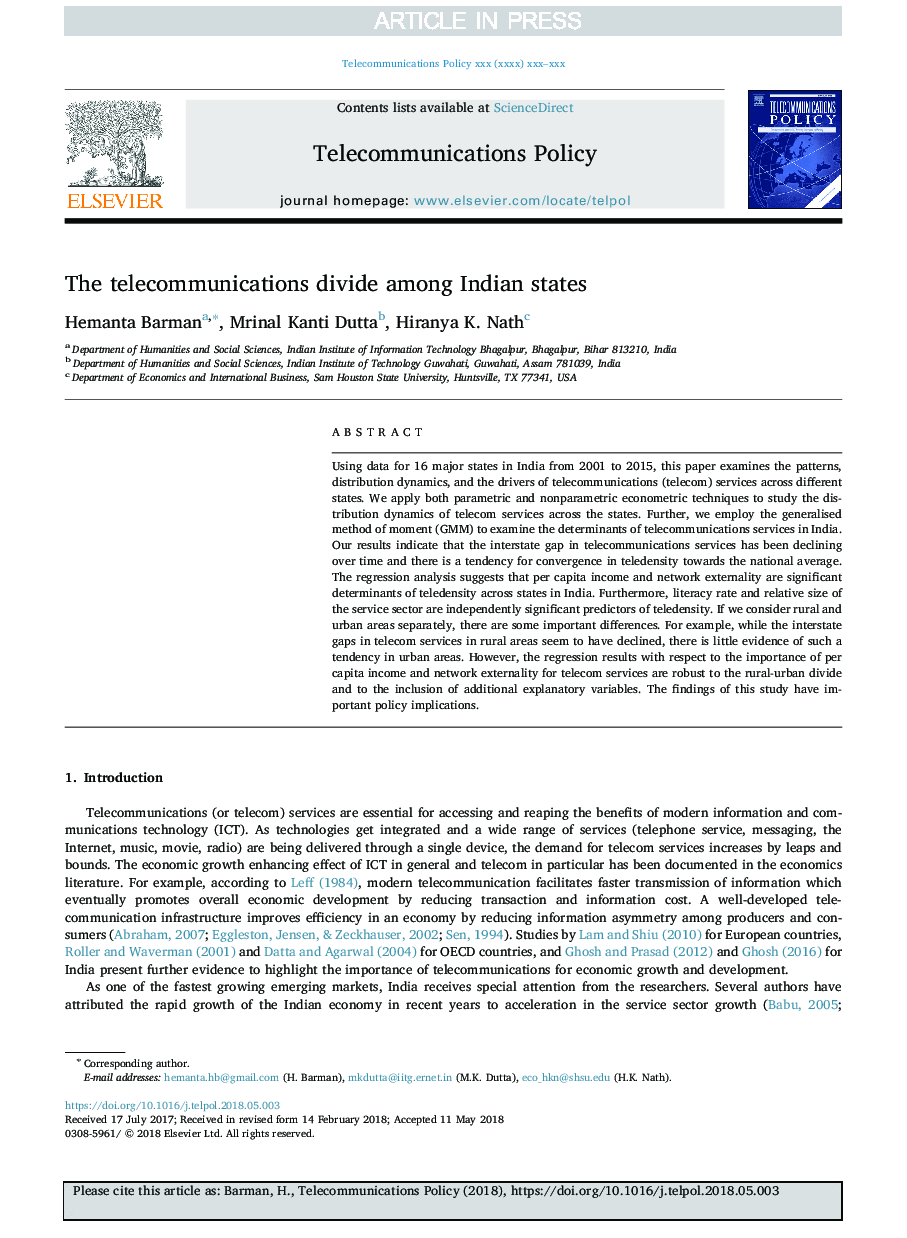| Article ID | Journal | Published Year | Pages | File Type |
|---|---|---|---|---|
| 6950211 | Telecommunications Policy | 2018 | 22 Pages |
Abstract
Using data for 16 major states in India from 2001 to 2015, this paper examines the patterns, distribution dynamics, and the drivers of telecommunications (telecom) services across different states. We apply both parametric and nonparametric econometric techniques to study the distribution dynamics of telecom services across the states. Further, we employ the generalised method of moment (GMM) to examine the determinants of telecommunications services in India. Our results indicate that the interstate gap in telecommunications services has been declining over time and there is a tendency for convergence in teledensity towards the national average. The regression analysis suggests that per capita income and network externality are significant determinants of teledensity across states in India. Furthermore, literacy rate and relative size of the service sector are independently significant predictors of teledensity. If we consider rural and urban areas separately, there are some important differences. For example, while the interstate gaps in telecom services in rural areas seem to have declined, there is little evidence of such a tendency in urban areas. However, the regression results with respect to the importance of per capita income and network externality for telecom services are robust to the rural-urban divide and to the inclusion of additional explanatory variables. The findings of this study have important policy implications.
Related Topics
Physical Sciences and Engineering
Computer Science
Information Systems
Authors
Hemanta Barman, Mrinal Kanti Dutta, Hiranya K. Nath,
